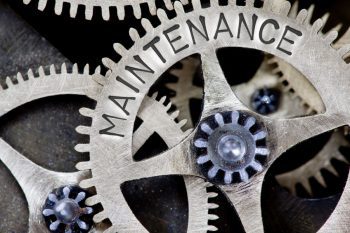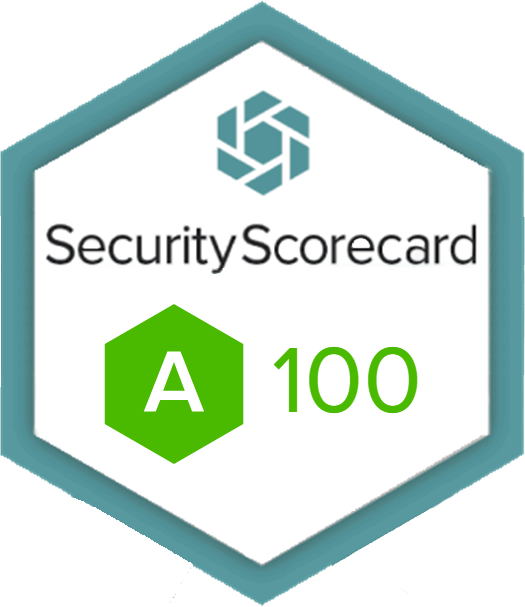 In the ever-evolving landscape of industries and businesses, the importance of a well-structured and efficient maintenance program cannot be overstated. Whether you’re in manufacturing, facilities management, or any industry that relies on equipment and infrastructure, the effectiveness of your maintenance efforts can directly impact operational success. To assist organizations in enhancing their maintenance strategies and achieving top-tier efficiency, we present ’50 Maintenance Ideas for Effectiveness. In this comprehensive list, we explore a wide array of practical approaches, strategies, and best practices that, when implemented thoughtfully, can help you significantly enhance the effectiveness of your maintenance program. From preventive maintenance to embracing cutting-edge technology, these ideas are designed to empower you to achieve maintenance excellence and ensure the reliability and longevity of your critical assets.
In the ever-evolving landscape of industries and businesses, the importance of a well-structured and efficient maintenance program cannot be overstated. Whether you’re in manufacturing, facilities management, or any industry that relies on equipment and infrastructure, the effectiveness of your maintenance efforts can directly impact operational success. To assist organizations in enhancing their maintenance strategies and achieving top-tier efficiency, we present ’50 Maintenance Ideas for Effectiveness. In this comprehensive list, we explore a wide array of practical approaches, strategies, and best practices that, when implemented thoughtfully, can help you significantly enhance the effectiveness of your maintenance program. From preventive maintenance to embracing cutting-edge technology, these ideas are designed to empower you to achieve maintenance excellence and ensure the reliability and longevity of your critical assets.
1. Conduct Regular Inspections: Implement scheduled inspections to identify issues early.
2. Prioritize Critical Assets: Focus on maintaining critical equipment that significantly impacts operations.
3. Develop Preventive Maintenance Plans: Create detailed maintenance schedules for each asset.
4. Embrace Predictive Maintenance: Utilize sensors and data analytics to predict equipment failures.
5. Implement Reliability-Centered Maintenance (RCM): Identify the most effective maintenance strategies for each asset.
6. Keep Detailed Maintenance Records: Maintain comprehensive records of maintenance activities and equipment history.
7. Train Maintenance Staff: Ensure your maintenance team is well-trained and updated on best practices.
8. Use Root Cause Analysis: Investigate the underlying causes of equipment failures to prevent future issues.
9. Establish Key Performance Indicators (KPIs): Measure maintenance performance using relevant metrics.
10. Implement Total Productive Maintenance (TPM): Involve all employees in maintenance to improve overall efficiency.
11. Monitor Equipment Condition: Use sensors and monitoring systems to track equipment health in real time.
12. Set Up a Centralized Maintenance Control Center: Streamline communication and coordination.
13. Maintain Spare Parts Inventory: Ensure you have the necessary spare parts readily available.
14. Schedule Downtime Wisely: Plan maintenance during non-peak hours to minimize disruptions.
15. Create a Maintenance Calendar: Visualize maintenance schedules for better planning.
16. Standardize Maintenance Procedures: Develop clear and standardized procedures for common tasks.
17. Perform Lubrication Management: Regularly lubricate moving parts to reduce friction and wear.
18. Implement Condition-Based Monitoring: Monitor equipment based on its actual condition rather than a fixed schedule.
19. Conduct Failure Mode and Effects Analysis (FMEA): Identify potential failure modes and their consequences.
20. Use Computerized Maintenance Management Systems (CMMS): Manage maintenance tasks, assets, and data digitally.
21. Train Employees in Equipment Care: Educate operators on basic maintenance practices.
22. Practice Lean Maintenance: Eliminate waste and inefficiencies from maintenance processes.
23. Develop Emergency Response Plans: Prepare for unexpected breakdowns with contingency plans.
24. Optimize Work Order Management: Streamline the process of assigning and tracking maintenance tasks.
25. Monitor Energy Efficiency: Ensure that equipment operates efficiently to reduce energy costs
26. Conduct Reliability Audits: Periodically assess the effectiveness of your maintenance program.
27. Perform Thermal Imaging Inspections: Identify hotspots and electrical issues in advance.
28. Invest in Predictive Analytics Software: Use data analysis to predict equipment failures.
29. Implement Failure Reporting Systems: Encourage employees to report issues promptly.
30. Schedule Overhaul Maintenance: Plan for major equipment overhauls at regular intervals.
31. Maintain Safety Protocols: Prioritize safety during maintenance activities to prevent accidents.
32. Consider Outsourcing Maintenance: Evaluate whether outsourcing certain tasks is cost-effective.
33. Embrace IoT (Internet of Things): Connect equipment to the internet for remote monitoring and control.
34. Review and Update Procedures: Regularly revise maintenance procedures based on lessons learned.
35. Analyze MTBF (Mean Time Between Failures): Monitor the average time between equipment failures.
36. Develop a Spare Parts Catalog: Organize spare parts inventory for easy access.
37. Monitor Vibration Levels: Detect imbalances and misalignments in rotating equipment.
38. Optimize Maintenance Routes: Plan efficient routes for inspection and repairs.
39. Train for Lockout/Tagout Procedures: Ensure safe handling during maintenance activities.
40. Encourage Employee Feedback: Gather input from maintenance personnel for process improvement.
41. Conduct Reliability Testing: Test equipment to ensure it meets performance standards.
42. Invest in Condition Monitoring Tools: Use tools like ultrasonic and infrared devices for inspections.
43. Cross-Train Maintenance Personnel: Ensure flexibility within your maintenance team.
44. Implement a Failure Notification System: Automate notifications for critical issues.
45. Foster a Culture of Continuous Improvement: Encourage employees to seek better maintenance practices.
46. Monitor Environmental Conditions: Consider factors like temperature and humidity in maintenance.
47. Conduct Vendor Audits: Evaluate the reliability of suppliers for spare parts.
48. Monitor Oil Analysis: Assess the condition of lubricants to predict equipment health.
49. Implement Mobile Maintenance: Allow maintenance staff to access information in the field.
50. Regularly Benchmark and Adapt: Compare your maintenance program to industry best practices and adjust accordingly.
The Vital Role of CMMS Software
Implementing an effective maintenance program is essential for ensuring the longevity and efficiency of equipment and facilities across various industries. Regular inspections, preventive maintenance, and efficient work order management are just a few of the key elements that contribute to successful maintenance efforts. However, the true game-changer in modern maintenance management is the integration of Computerized Maintenance Management Systems (CMMS). CMMS software streamlines maintenance tasks, asset tracking, and data management, providing invaluable insights and enabling predictive maintenance. With CMMS at the helm, organizations can maintain their assets more effectively, reduce downtime, and optimize resources, ultimately ensuring a smoother operational journey.”
Incorporating these ideas and strategies can help you build a robust and effective maintenance program that ensures the reliability and longevity of your assets while minimizing downtime and maximizing safety and productivity. Remember
Additional Resources
Maintenance Terms & Definitions Glossary
Frequently Asked Questions: Achieving Maintenance Effectiveness
How do you demonstrate the effectiveness of maintenance?
Maintenance effectiveness is quantified by determining the percentage ratio of technician activities falling into three distinct categories: Planned, Corrective, and Breakdown. In essence, all maintenance activities can be categorized within one of these three groups, allowing for a clear assessment of their overall efficiency.
What three essential factors must be measured to gauge maintenance effectiveness, and why are outcome indicators crucial in this assessment?
Measuring maintenance effectiveness hinges on three fundamental factors. Outcome indicators play a pivotal role in this assessment, as they ultimately narrate your organization’s efficiency story. These encompass vital metrics such as the cost per unit produced, maintenance cost relative to replacement value, equipment uptime, and inventory turnover rates. To ensure that your measurement systems and Key Performance Indicators (KPIs) are aligned with your organization’s strategic goals, regularly reviewing and refining these indicators is paramount for continuous improvement in maintenance effectiveness and overall operational efficiency.
What Are the Four Key Elements for a Successful Maintenance Program?
Creating a successful maintenance program involves four essential components. These include efficient work order management, utilizing advanced technology, gaining valuable insights about assets and maintenance, and shifting from a reactive to a proactive maintenance approach. These elements not only lead to success but also enhance the longevity and efficiency of your organization’s critical assets.



